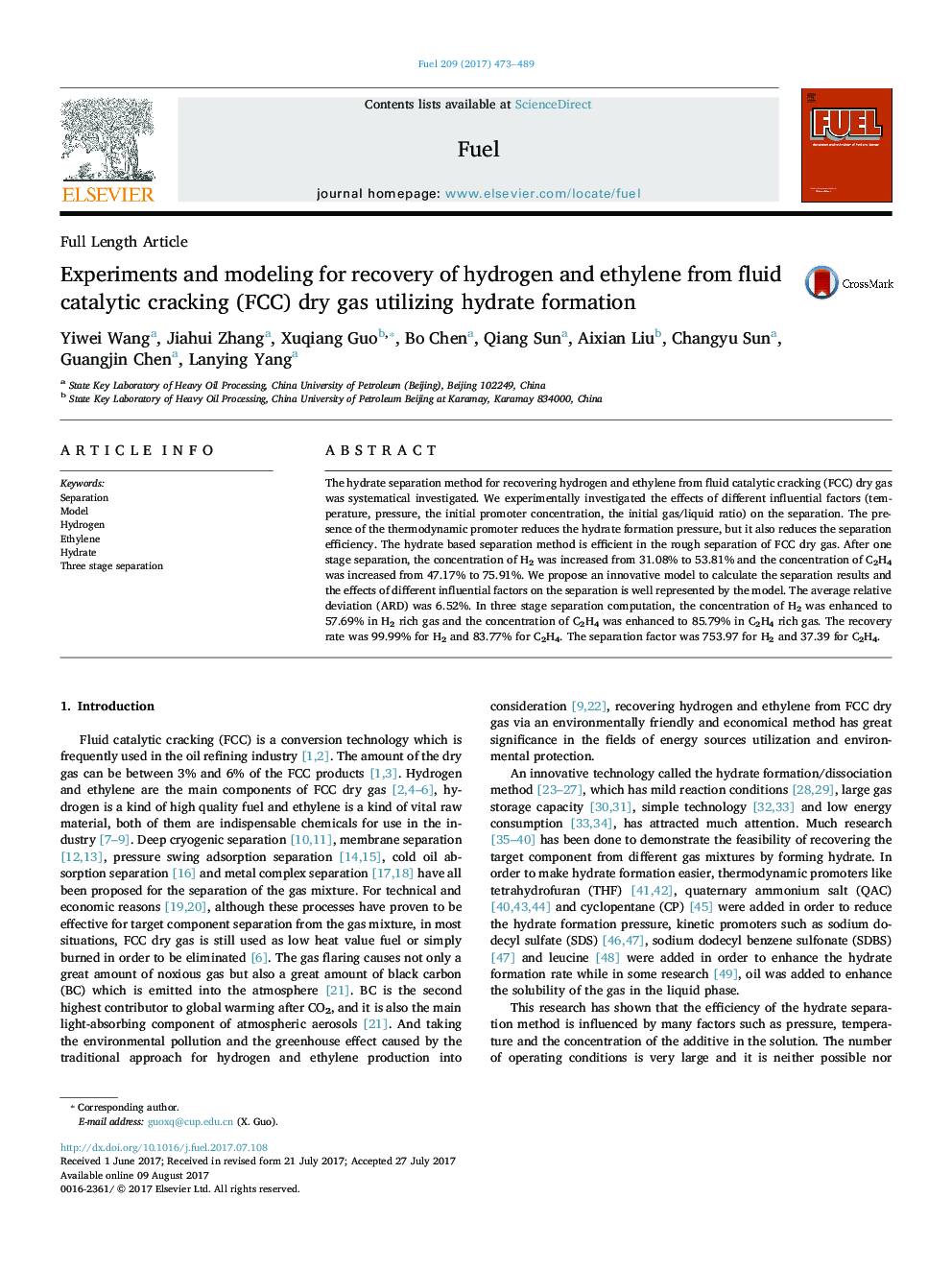| کد مقاله | کد نشریه | سال انتشار | مقاله انگلیسی | نسخه تمام متن |
|---|---|---|---|---|
| 6473943 | 1424955 | 2017 | 17 صفحه PDF | دانلود رایگان |

- A model was proposed to calculate the separation results under different conditions.
- The concentration of hydrogen can be reduced from 31.08% to 3.17%.
- The recovery rate of hydrogen is higher than 90%.
- The concentration of ethylene can be enhanced from 47.17% to 75.91%.
- Higher efficiency at high pressure, low temperature, low TBAB concentration.
The hydrate separation method for recovering hydrogen and ethylene from fluid catalytic cracking (FCC) dry gas was systematical investigated. We experimentally investigated the effects of different influential factors (temperature, pressure, the initial promoter concentration, the initial gas/liquid ratio) on the separation. The presence of the thermodynamic promoter reduces the hydrate formation pressure, but it also reduces the separation efficiency. The hydrate based separation method is efficient in the rough separation of FCC dry gas. After one stage separation, the concentration of H2 was increased from 31.08% to 53.81% and the concentration of C2H4 was increased from 47.17% to 75.91%. We propose an innovative model to calculate the separation results and the effects of different influential factors on the separation is well represented by the model. The average relative deviation (ARD) was 6.52%. In three stage separation computation, the concentration of H2 was enhanced to 57.69% in H2 rich gas and the concentration of C2H4 was enhanced to 85.79% in C2H4 rich gas. The recovery rate was 99.99% for H2 and 83.77% for C2H4. The separation factor was 753.97 for H2 and 37.39 for C2H4.
Journal: Fuel - Volume 209, 1 December 2017, Pages 473-489